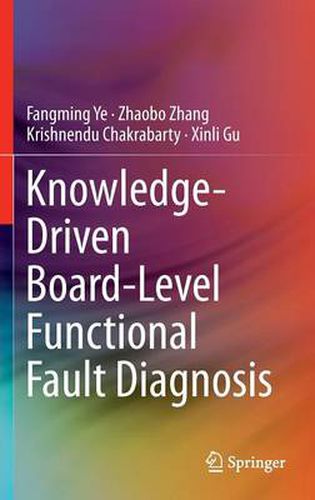Readings Newsletter
Become a Readings Member to make your shopping experience even easier.
Sign in or sign up for free!
You’re not far away from qualifying for FREE standard shipping within Australia
You’ve qualified for FREE standard shipping within Australia
The cart is loading…






This title is printed to order. This book may have been self-published. If so, we cannot guarantee the quality of the content. In the main most books will have gone through the editing process however some may not. We therefore suggest that you be aware of this before ordering this book. If in doubt check either the author or publisher’s details as we are unable to accept any returns unless they are faulty. Please contact us if you have any questions.
This book provides a comprehensive set of characterization, prediction, optimization, evaluation, and evolution techniques for a diagnosis system for fault isolation in large electronic systems. Readers with a background in electronics design or system engineering can use this book as a reference to derive insightful knowledge from data analysis and use this knowledge as guidance for designing reasoning-based diagnosis systems. Moreover, readers with a background in statistics or data analytics can use this book as a practical case study for adapting data mining and machine learning techniques to electronic system design and diagnosis. This book identifies the key challenges in reasoning-based, board-level diagnosis system design and presents the solutions and corresponding results that have emerged from leading-edge research in this domain. It covers topics ranging from highly accurate fault isolation, adaptive fault isolation, diagnosis-system robustness assessment, to system performance analysis and evaluation, knowledge discovery and knowledge transfer. With its emphasis on the above topics, the book provides an in-depth and broad view of reasoning-based fault diagnosis system design. * Explains and applies optimized techniques from the machine-learning
domain to solve the fault diagnosis problem in the realm of electronic system design and manufacturing;* Demonstrates techniques based on industrial data and feedback from an actual manufacturing line;* Discusses practical problems, including diagnosis accuracy, diagnosis time cost, evaluation of diagnosis system, handling of missing syndromes in diagnosis, and need for fast diagnosis-system development.
$9.00 standard shipping within Australia
FREE standard shipping within Australia for orders over $100.00
Express & International shipping calculated at checkout
This title is printed to order. This book may have been self-published. If so, we cannot guarantee the quality of the content. In the main most books will have gone through the editing process however some may not. We therefore suggest that you be aware of this before ordering this book. If in doubt check either the author or publisher’s details as we are unable to accept any returns unless they are faulty. Please contact us if you have any questions.
This book provides a comprehensive set of characterization, prediction, optimization, evaluation, and evolution techniques for a diagnosis system for fault isolation in large electronic systems. Readers with a background in electronics design or system engineering can use this book as a reference to derive insightful knowledge from data analysis and use this knowledge as guidance for designing reasoning-based diagnosis systems. Moreover, readers with a background in statistics or data analytics can use this book as a practical case study for adapting data mining and machine learning techniques to electronic system design and diagnosis. This book identifies the key challenges in reasoning-based, board-level diagnosis system design and presents the solutions and corresponding results that have emerged from leading-edge research in this domain. It covers topics ranging from highly accurate fault isolation, adaptive fault isolation, diagnosis-system robustness assessment, to system performance analysis and evaluation, knowledge discovery and knowledge transfer. With its emphasis on the above topics, the book provides an in-depth and broad view of reasoning-based fault diagnosis system design. * Explains and applies optimized techniques from the machine-learning
domain to solve the fault diagnosis problem in the realm of electronic system design and manufacturing;* Demonstrates techniques based on industrial data and feedback from an actual manufacturing line;* Discusses practical problems, including diagnosis accuracy, diagnosis time cost, evaluation of diagnosis system, handling of missing syndromes in diagnosis, and need for fast diagnosis-system development.